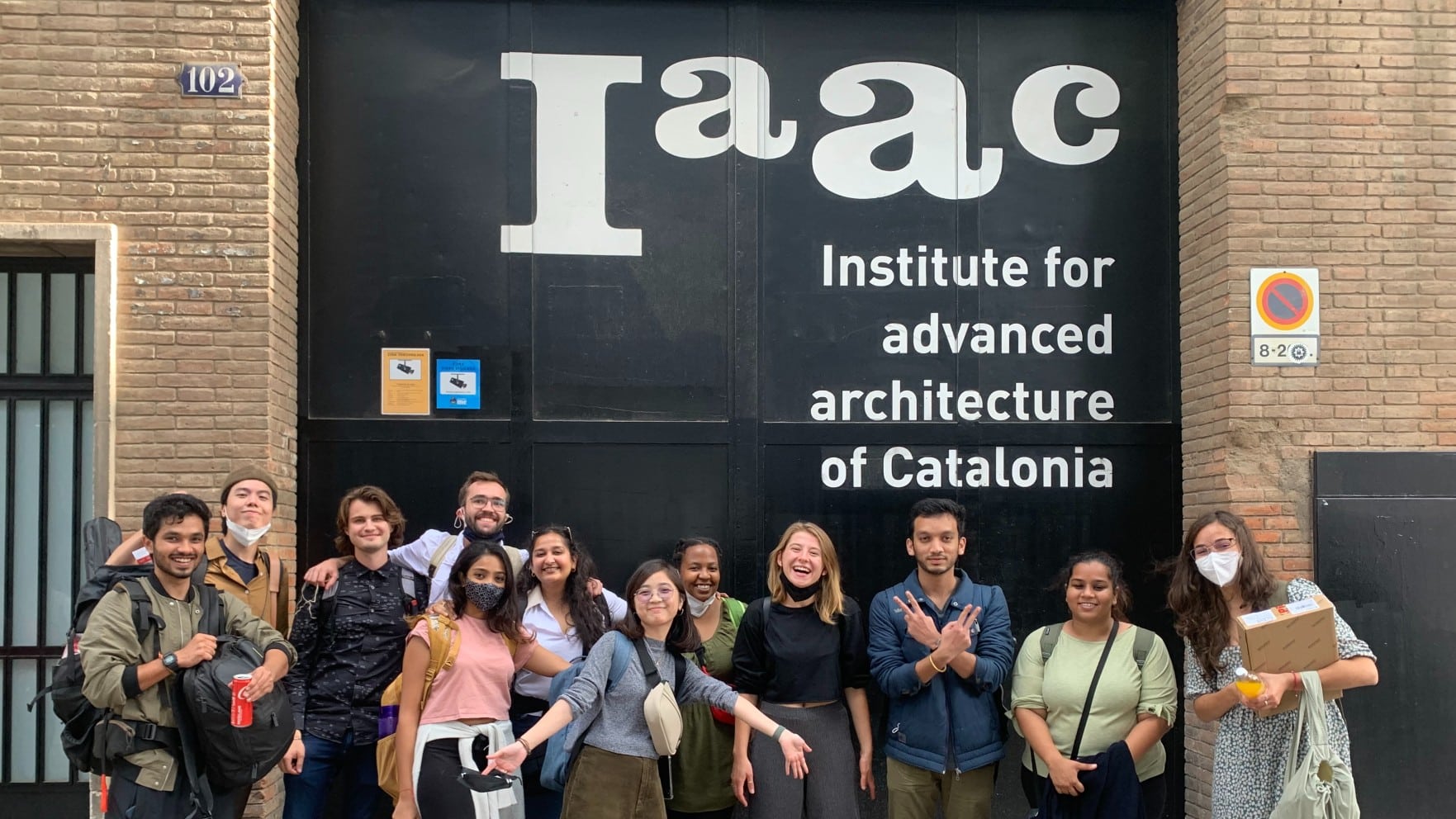MAEBB Class of 2022 Begin Their Journey at Valldaura Labs

After spending two weeks in the intensive IAAC pre-course at the main campus in Poblenou, this year’s MAEBB students loaded their belongings into a bus and headed up the mountain to their new home/workshop. They have spent their first few weeks orienting themselves to the facilities, familiarizing themselves with the tools in the Green Fab Lab, carpentry workshop, gardens and agrolab. MAEBB 2021-22 is made up of 18 architects, designers and engineers from all over the world: Mexico, Norway, Kenya, Spain, India, Belgium, Nigeria, Puerto Rico, and Germany. The incredible diversity of talents and cultures will be an asset as the class dives in to a series of collaborative design projects.
Students have stayed busy so far this academic year, participating in immersive workshops on forestry and advanced computation, preparing and planting the winter crop rotation in the gardens, and prototyping with the laser cutters and 3D printers in the Fab Lab. Their first studio project, a multi-use urban installation made of wood materials harvested from the Collserola forest, will be installed in Barcelona at the Escola Entença in early December. This project asks students to imagine a multi-use structure outside of a newly constructed school, to be used both by students but also the citizens of the neighborhood. After several rounds of designs and revisions, the students of MAEBB have arrived at a truly dynamic proposal that is currently being fabricated at the Green Fab Lab in Valldaura.
While the main focus thus far has been on fabrication and prototyping in the Green Fab Lab, a core component of any IAAC program, this year’s MAEBB students have also been pushing themselves academically with courses in theory and biology. In Ecological Thinking, led by Jordi Vivaldi, students are reading contemporary philosophical texts on ecology and making relevant comparisons to historical works of design and architecture. In Ecological Interactions, Jonathan Minchin has been feeding the students a steady supply of biological concepts, vocabulary and analysis. This course not only introduces students to the general principles of propagation, germination and nutrient cycling that they can observe in the garden, but also expands to advanced biological theories that are relevant to today’s climate debates.



